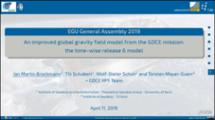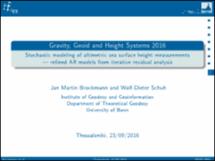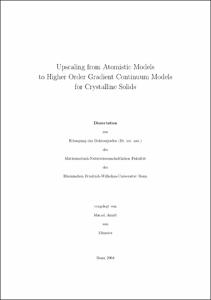Nguyen, Thuy Huu: Towards improved process representation for modelling CO2 and H2O fluxes of crops. - Bonn, 2022. - Dissertation, Rheinische Friedrich-Wilhelms-Universität Bonn.
Online-Ausgabe in bonndoc: https://nbn-resolving.org/urn:nbn:de:hbz:5-66603
Online-Ausgabe in bonndoc: https://nbn-resolving.org/urn:nbn:de:hbz:5-66603
@phdthesis{handle:20.500.11811/9826,
urn: https://nbn-resolving.org/urn:nbn:de:hbz:5-66603,
author = {{Thuy Huu Nguyen}},
title = {Towards improved process representation for modelling CO2 and H2O fluxes of crops},
school = {Rheinische Friedrich-Wilhelms-Universität Bonn},
year = 2022,
month = may,
note = {Exchange rates of CO2 and H2O between vegetation and the atmosphere are strongly linked by stomatal functions and crop growth. Crops under drought stress show different responses, such as stomatal regulations and canopy adjustments (i.e., in leaf area). In crop models and land surface models, stomatal regulations and associated underlying mechanisms (i.e., plant hydraulic conductance - Kplant), are considered in simplistic ways which require improvements. The first aim of the thesis was to gain a better understanding of the relationships between soil moisture, morphological changes (i.e., leaf area and crop size), and stomatal responses for different crops at various scales (leaf and canopy) through field experiments and modelling studies. The second aim was to use this knowledge to improve the modelling of gas fluxes and crop growth by including a new modeling modul for simulating stomatal regulations and Kplant. Data were collected in 2015, 2016, 2017, and 2018 at a field located in western Germany, characterized by two contrasting soil types (stony and silty) and different water regimes (irrigated, rainfed, and drought). Referring to the first aim, water deficit strongly reduced photosynthesis and transpiration rates at both leaf and canopy levels as well as biomass growth. Winter wheat showed an anisohydric stomatal response (variable leaf water potential - Ψleaf), while the Ψleaf level of maize was maintained and ranged from -1.6 to -2 MPa. The reduction of leaf area plays an important role in regulating transpiration and assimilation rates for both wheat and maize. Isohydric behaviour under water-deficient conditions was not necessarily associated with the limitation of the photosynthetic capacity of maize because of its special leaf anatomy and physiological advantages of the C4 photosynthetic pathway. For the second aim, an existing crop model (LINTULCC2) was modified to create a hourly subroutine for the simulations of diurnal changes in assimilation and stomatal conductance. The modified shoot model was then coupled with the root growth module (SLIMROOT) and a physically-based water balance model (HILLFLOW 1D), and tested using different root water uptake (RWU) models (Feddes and Couvreur) using an hourly time step. While the Feddes RWU model does not consider Kplant, the Couvreur approach explicitly estimates Kplant from root hydraulic conductance and total root length, which, in turn, depends on root growth. In this approach, the water potential gradient from soil to root to leaf is simulated. A critical leaf water potential threshold was used to account for the stomatal behaviors. Both approaches showed a relatively similar performance in simulating dry matter, LAI, root growth, RWU, photosynthesis rate, and soil water content for winter wheat and maize. Two-way feedbacks between growth and root water uptake, inclusion of plant hydraulic conductance, and stomatal functions are very important for predicting the crop response to different soil water conditions in different soils. This thesis highlighted the need for further research on the effects of the within-field variability of soil characteristics on dynamic root growth, root distribution, and corresponding model improvements for reliable estimations of root hydraulic conductance and gas fluxes under drought stress. The coupled model developed within this thesis marks a promising approach that should be tested for a wider range of crops, soils, and climate conditions to be applied for modeling studies at larger spatial scales.},
url = {https://hdl.handle.net/20.500.11811/9826}
}
urn: https://nbn-resolving.org/urn:nbn:de:hbz:5-66603,
author = {{Thuy Huu Nguyen}},
title = {Towards improved process representation for modelling CO2 and H2O fluxes of crops},
school = {Rheinische Friedrich-Wilhelms-Universität Bonn},
year = 2022,
month = may,
note = {Exchange rates of CO2 and H2O between vegetation and the atmosphere are strongly linked by stomatal functions and crop growth. Crops under drought stress show different responses, such as stomatal regulations and canopy adjustments (i.e., in leaf area). In crop models and land surface models, stomatal regulations and associated underlying mechanisms (i.e., plant hydraulic conductance - Kplant), are considered in simplistic ways which require improvements. The first aim of the thesis was to gain a better understanding of the relationships between soil moisture, morphological changes (i.e., leaf area and crop size), and stomatal responses for different crops at various scales (leaf and canopy) through field experiments and modelling studies. The second aim was to use this knowledge to improve the modelling of gas fluxes and crop growth by including a new modeling modul for simulating stomatal regulations and Kplant. Data were collected in 2015, 2016, 2017, and 2018 at a field located in western Germany, characterized by two contrasting soil types (stony and silty) and different water regimes (irrigated, rainfed, and drought). Referring to the first aim, water deficit strongly reduced photosynthesis and transpiration rates at both leaf and canopy levels as well as biomass growth. Winter wheat showed an anisohydric stomatal response (variable leaf water potential - Ψleaf), while the Ψleaf level of maize was maintained and ranged from -1.6 to -2 MPa. The reduction of leaf area plays an important role in regulating transpiration and assimilation rates for both wheat and maize. Isohydric behaviour under water-deficient conditions was not necessarily associated with the limitation of the photosynthetic capacity of maize because of its special leaf anatomy and physiological advantages of the C4 photosynthetic pathway. For the second aim, an existing crop model (LINTULCC2) was modified to create a hourly subroutine for the simulations of diurnal changes in assimilation and stomatal conductance. The modified shoot model was then coupled with the root growth module (SLIMROOT) and a physically-based water balance model (HILLFLOW 1D), and tested using different root water uptake (RWU) models (Feddes and Couvreur) using an hourly time step. While the Feddes RWU model does not consider Kplant, the Couvreur approach explicitly estimates Kplant from root hydraulic conductance and total root length, which, in turn, depends on root growth. In this approach, the water potential gradient from soil to root to leaf is simulated. A critical leaf water potential threshold was used to account for the stomatal behaviors. Both approaches showed a relatively similar performance in simulating dry matter, LAI, root growth, RWU, photosynthesis rate, and soil water content for winter wheat and maize. Two-way feedbacks between growth and root water uptake, inclusion of plant hydraulic conductance, and stomatal functions are very important for predicting the crop response to different soil water conditions in different soils. This thesis highlighted the need for further research on the effects of the within-field variability of soil characteristics on dynamic root growth, root distribution, and corresponding model improvements for reliable estimations of root hydraulic conductance and gas fluxes under drought stress. The coupled model developed within this thesis marks a promising approach that should be tested for a wider range of crops, soils, and climate conditions to be applied for modeling studies at larger spatial scales.},
url = {https://hdl.handle.net/20.500.11811/9826}
}









